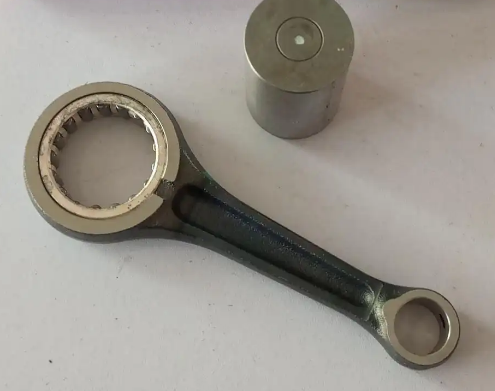The connecting rod, a fundamental component in the engine of your vehicle, can sometimes require repair. With knowledge and skill, you can execute this task efficiently to improve your vehicle’s performance. In this article, we delve into the process of repairing a connecting rod, highlighting its role, tools required, the repair procedure, and the importance of precautionary measures.
The Vital Role of Connecting Rod in Your Engine
In any internal combustion engine, the connecting rod plays a pivotal role. This component serves as a link between the piston and the crankshaft, converting the linear motion of the piston into rotary motion for the crankshaft. When the connecting rod malfunctions or gets damaged, it can severely impact the engine’s performance.
Signs Indicating the Need for Connecting Rod Repair
Indications that your connecting rod needs repair can include a knocking sound from the engine, loss of power, decreased fuel efficiency, or in worst cases, complete engine failure. Addressing these issues promptly can prevent further damage and potentially expensive repairs.
Essential Tools for Repairing a Connecting Rod
Repairing a connecting rod typically necessitates a set of specialized tools. These can include a rod alignment tool for checking rod straightness, a rod vise for securing the rod during work, and a micrometer for measuring the diameter of the rod journal. In some cases, machining equipment may be required for more intensive repairs.

The Repair Process of a Connecting Rod
Repairing a connecting rod generally involves inspecting and correcting any bending or twisting, resizing the rod journal, and checking the pin bore and crankpin bore for any signs of wear or damage. In some cases, more advanced repairs such as crack detection or rod reconditioning may be necessary. It’s critical to consult a repair manual or professional mechanic for specific instructions based on your vehicle model and the nature of the damage.
Precautionary Measures during Connecting Rod Repair
Care must be taken during the repair process to avoid causing further damage to the connecting rod or associated components. Any alterations to the connecting rod should be carried out with precision to maintain the balance and alignment of the engine’s internal components. It is also important to ensure that the rod is properly lubricated during reassembly to avoid premature wear.
Boosting Engine Performance through Timely Repairs
Understanding how to repair a connecting rod is not only a valuable skill for mechanics but also for vehicle owners and enthusiasts looking to extend the lifespan of their engines. Timely and appropriate repairs can enhance engine performance, fuel efficiency, and vehicle reliability, making it a worthwhile endeavor for any vehicle owner.